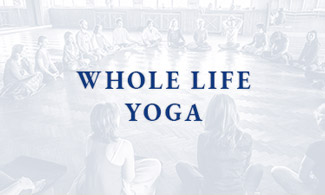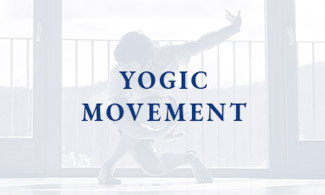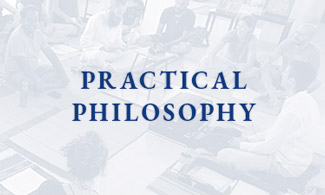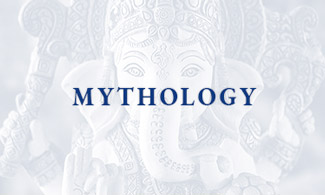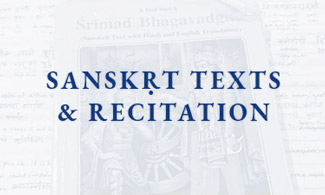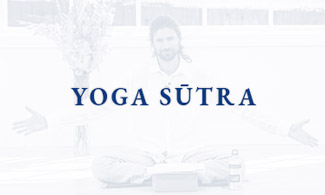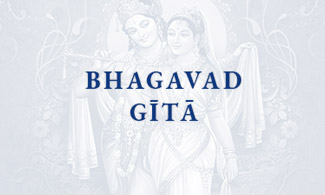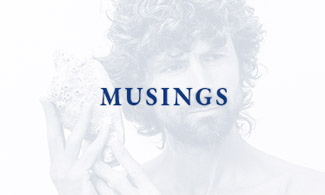
Bhagavad Gītā Chapter Three at MCY April 2020 Session Notes One
This season, my live teaching engagements are cancelled/suspended for the time being. I’m feeling very grateful for the chance to continue sharing some programs online. This month a course on Chapter Three of the Bhagavad Gītā at MCY, Glasgow. I thought it could be nice to share my session notes here.
March 3rd – Session One (March 2nd) Summary
Tellingly, the third chapter begins with a question. Kṛṣṇa has given the distillation of the whole teaching in chapter two. As the elaboration and expansion of that teaching begins, it does so from a question, reminding us that yoga is about inquiry. It is not incidental or accidental that the Gītā is a conversation. It is in conversation with life, in dialogue with the constant change and unfolding wonder of existence that we make ourselves available to learn and grow, and to take/claim/allow our place in the greater unfolding and evolution of life.
Yoga does not give us ‘the answer’ in the sense of a one-size fits all/catch-all solution. Based on the observation of nature, it is far too wise, realistic and practical for that. Instead, it encourages us to stay open, alert and present. Yoga gives us a robust frame and structure to support ongoing inquiry, to help us keep engaging in conversation with life so we can ask skilful, helpful questions, so we can make ourselves available for the ‘hints’/guidance/answers that life and nature are constantly offering.
In the first two verses, the manner of Arjuna’s question also reminds us of the purity of his intent. In the Gītā, Arjuna represents the human being who is a sincere seeker. He addresses Kṛṣṇa by two significant epithets: Janārdana – exciter/stimulator/agitator/protector of humans; and Keśava – the one who holds/sustains/supports existence/creation.
‘Why Kṛṣṇa – you who know what it means to support the whole of life, you who stimulate/animate human beings, you’ve spoken about how I need to become oceanic: full, content, whole like the ocean (2.70), you’ve said that if I can move freely through the things of the world without being pulled hither and thither, then I’ll be established in yoga, you’ve said that if I can just get a taste of totality, I can access the desireless state of oneness/wholeness. If this state of clear awareness, of clear wisdom and insight that can see beyond and through all the comings and goings of life is so great – if wisdom and clear awareness is where it’s really at, why are you urging me to this terrible action?
‘As you emphasise the imperative of action and engagement, and the primacy of clear, discerning awareness and peaceful wisdom, it’s as if your words point in different directions, urge me in different ways. It’s too much for my intellect! It makes me feel confused, consternated! Please Kṛṣṇa, tell me that one, clear way by which I can do what is truly śreyaḥ – what is for the good of all. Make it clear for me, unambiguous, so I can obtain/come to śreyaḥ – the highest good!’
Arjuna’s question points to many ‘answers’. Here again is encoded and emphasised a key idea that we find throughout the Gītā. If our attitude is one of openness, of gratitude, and of inquiry, teachings and insights will come to us. The Guru of Nature is ever active. Our task is to make ourselves receptive. When Arjuna calls Kṛṣṇa Janārdana (stimulator) and Keśava (holder) the verse reminds us that in order to maintain and support the evolution of life, we have to be active. We have to engage and participate. Arjuna also acknowledges that ‘the way’ Kṛṣṇa has set forth so far is too much for his intellect. And it is! We cannot come to yoga by merely reading or hearing about it! That can usher us towards it, can invite us towards deeper recognitions. However, in the practical tradition of yoga, practice and study are never separate, but are two wings of one bird. Yoga – integration of the whole field of ourselves – is too much for our mere intellect to grasp. It is only when we practice it, experientially, allying the discerning power of our intellect to the harnessed energy and intelligence of our bodies, senses, minds and emotions that we will be able to come to a true understanding – will be able to stand in that recognition/have that awareness under our feet, supporting how we walk through the mystery and wonder of life.
Arjuna’s question also reminds us how in yoga we will encounter paradox. We will encounter seeming pairs of opposites. Yoga is an all-inclusive game. If we want unity, we cannot leave anything out. In other words, yoga is about the resolution of paradox, about reconciling that which seems impossible to reconcile, about coming to the embodied, experiential lived recognition and understanding that things which seem opposed can actually be mutually enhancing and complementary, and can be included and brought together into a state of dymanic balance and harmony.
Arjuna’s question also reverberates with ‘humanness’. He, like us so often, wants an easy way, a clear, unequivocal answer. On the one hand, we want it to be easy – at least we say we do – yet our appetite for drama and our capacity for complexity suggests that really we may be better equipped for this resolution of paradox than we may sometimes give ourselves credit for, or remember/recognise.
Kṛṣṇa responds by addressing Arjuna as Anagha – one free from blame. Beautifully then he reassures us that such doubting, such confusion, is no cause for us to be weighed down, or to castigate ourselves.
And he says:
‘In this world – of duality, but which is not binary, but a realm of nuance and infinite perspectives and permutations – from the beginning/from time immemorial/always/perennially I have taught/proclaimed this teaching (of Sāṅkhya-Yoga) from two positions: with the yoga of knowledge for those of more intellectual/reflective/theoretical persuasion; and with the yoga of action for those of more practical/active/social persuasion.’
Notably though, the way of karmayoga and jñānayoga are both yoga! From either position/orientation, it is still yogena – by yoga – that one practices/proceeds.
We also mentioned that though Kṛṣṇa is saying that the teaching is always given/can always be taken from two positions, he is not saying there are two teachings or two paths. Rather, the one path of yoga, which by its very nature is inclusive, can be approached from different perspectives. Yoga is practical, so we approach in a way that works for us. Ultimately though, and even immediately, our own unique ‘stream’ in the great river of practice will have to flow along in a way that includes all parts of ourself. Otherwise, we will keep getting stuck in the same old eddies, or going around in circles in an oxbow lake, even when so much of ourself is ready to stream on towards the broader, wider – more inclusive – flowing river that leads to the ocean of totality.
We mentioned that while the path of yoga is really one vast, inclusive path, there are many approaches. Sometimes people speak of five yoga-s, corresponding to the five elements:
Everything grows from the roots. As Kṛṣṇa begins to lay out the vast, inclusive way of yoga, he starts at the foundation, with karma yoga, the yoga of action, action that we never stand separate from.
- Earth – pṛthvī – karma yoga
- Water – jala – bhakti yoga
- Fire – agni/tejas – haṭha yoga
- Wind/Air – Vāyu – jñāna yoga
- Space/Ether – rāja yoga
All the elements are in us. If we are to come to yoga, to a state of togetherness/all-one-ness, then we cannot leave anything out.
The yoga practitioner is always taught to work from gross to subtle. Whichever aspect of yoga we begin with, as we explore from gross to subtle, it brings us into the other aspects. For example, if we are practising the royal (rāja) yoga of meditation (as encoded in Patañjali’s yoga sūtra and in the Gītā), as we explore the medi-state, we see how the ways we act (karma), the ways we relate to and approach (bhakti) existence, the tenor of our emotional life, the way we relate to and honour the gifts of our pulsating bodily vehicle that is a sacred microcosmic manifestation of the universe (haṭha), and the way we honour the gifts of our discernment, intelligences and self-reflexive awareness (jñāna) are all totally and intrinsically entwined with our meditation practice. As has sometimes been said, how we do one thing is how we do everything. If we are practising meditation/yoga, we cannot leave anything out. Of course, some may take greater recourse to emotional or bodily practices, some may orient more through study and the intellect, but yoga requires us to honour, nourish, include all parts of ourself, all the elements of our being.
In the fourth verse, Kṛṣṇa makes it clear that:
‘It is not by not entering into action that a person becomes free from (the binding influence of) action/karma. Sitting on the sidelines of life is not an option. That is not the way to become free. That is not the way to be free to enjoy and experience the moment without being weighed down by its residual impressions. Nor is renunciation the mere external/surface renunciation or giving up of/desisting from action.’
To illustrate, we considered the story of the two ‘renunciate’ monks whose vows included celibacy and avoiding physical contact with others. On their way back to their monastery through the forest they come to a river, with the water quite high, the current strong. At the river bank is a gorgeous young woman. The younger monk shrinks back, keeping his distance, summoning the inner demoniacal tyrant of his suppressive willpower to avert his eyes from the perturbingly enchanting flame of her vivid beauty… The older monk walks up to her, straight, polite. It’s obvious she needs to cross the water, and is afraid for her safety. Without hesitation, with a warm smile grounded in kindness and compassion, the older monk picks up the young maiden in his arms and wades skilfully across the river. His younger brother monk follows in their wake, at a ‘safe distance’.
Crossed the river, the older monk lowers the woman’s feet to the Earth and gives her his blessing for a safe journey onwards back to her village. He then continues on, not speaking, for these monks also observe a vow of silence in the morning hours. It is peaceful in the forest, and there is a rich, gentle music of birdsong. From his years of assiduous practice, the older monk’s internal awareness is a realm of deep, spacious quiet. He is able to enjoy the sounds of the forest, yet he is also able to discern something of the noisy torment haranguing the mind of his young companion.
Later in the afternoon, the two monks reach the forest hermitage of their master, and go to see him to report on their excursion. The master asks them if there was any incident of note on their return journey.
‘No’, says the senior monk.
The younger monk’s eyes bulge and he glances askance at his senior.
‘You disagree?’ inquires the master.
‘Well, I do, yes, I would say that breaking our vows of silence and celibacy is something of incident!’
The older monk smiles:
‘Brother, I carried the young woman across the river. Once we had crossed over and she felt safe to continue her way home. I set her down… You have been carrying her in your mind ever since.’
And the master and the older monk smile kindly at the younger one.
This story illustrates powerfully what Kṛṣṇa emphasises here, that it is not by mere external renunciation that one renounces, that it is not by not entering into action that one becomes free of the binding influence of action.
The contrast of the two monks also serves powerfully to illustrate ‘the way’ of yoga. As they walk through the forest, beauty is all around, then comes a type of beauty that the younger one has ‘ideas’ around, ‘that it is dangerous or forbidden’, and his ideas get in the way of his humanity, stop him from helping another human being. He, young and hale, denies the gift of his youthful strength, denies his conscience that would urge him to be of help, and shrinks back, looking on in disapproval as his older companion uses his strength to carry the young woman across the torrent. The young monk is paralysed by his belief system. The ‘code’ that he lives by, and which ordinarily, in the monastery, may serve him fine, is not adaptable or robust enough for the extraordinary reality of the wild forest of Life! His reaction shows how attachment to ideas and prejudices can bind and blind us, ensnare us, imprison us.
Beautifully, the example of his more mature companion demonstrates the nuanced, adaptable, robust and inclusive way of yoga. More seasoned, he knows that rules sometimes have to be broken, sometimes must be broken, to respect the deeper principles they are designed to enshrine. He does not hesitate or shrink back from life. In the quiet spaciousness of his awareness, he has room to respond, rather than react from a conditioned, fearful place. And so he is free to heed his conscience, to bring forth the gift of his empathic humanity. Simply, generously, honouring the gift of his strength and awareness, he picks the woman up and carries her across the water.
In symbolic teaching stories, or archetypal stories like this, I often find it helpful to consider the different characters as aspects of ourself, or of a single psyche.
The gentle smiles of the older monk and the master in response to the younger monk’s consternation also demonstrate ‘the way’ of yoga, and how we can gradually free ourselves of the burden of the binding influence of action. They smile. Gently, warmly, they invite the younger one – less seasoned, less spacious, more reactive – to his own recognition. When he ‘spits out’ his disapproval, he is able to see it, and then see that it perhaps has a deeper source: his own perturbation at feeling blocked in relation to the light of his own conscience, his own anger at himself for being a slave to rules and fear, when something deeper in him knows all the while he can walk gracefully, like his older brother has shown him… He is invited to come to his own, deeper, owned recognition that it is not really so much about what he does, but what is the quality of his motivation; not so much about what he does but more about how he does it, how he meets the extraordinary and the unexpected gifts/opportunities that one may encounter along the forest path of life.
In the fifth verse, Kṛṣṇa further emphasises the inevitability of action;
‘No one – no one, no exceptions! – stands outside of action even for a moment! No one is ever, even for a moment able to stand as a ‘non-doer of action’. Everyone, all of us, each one of us, is always and constantly forced/obliged to act by the guṇa-s born of Prakṛti/Nature. This is beyond our will or control!’
Everything in existence, in prakṛti, the realm of nature, is active. Nature is the realm of birth, death and change. Manifest existence is woven with the three threads of the guṇa-s:
Sattva, rajas, and tamas.
- Sattva – the pure, essential existence of a thing
- Rajas – its dynamism, its being subject to change
- Tamas – its inertia, and its eventual decay
We are creatures of Nature. We are nature. Born, we will die, and between those two great changes, we will be subject to constant change. Activity will be a constant. Action is inevitable. Kṛṣṇa has already made it clear. Yoga is a practical way. If something is inevitable, then do it the best you can. Your nature is to act, so act well! Harness the gifts of your integrated awareness so you can make your actions worship. Bring the harmonised powers of your body, senses, mind and emotions together, so you can live life as a beautiful movement, so you can honour and celebrate the gifts of life. Work with the reality of your own nature to realise your deeper essence.
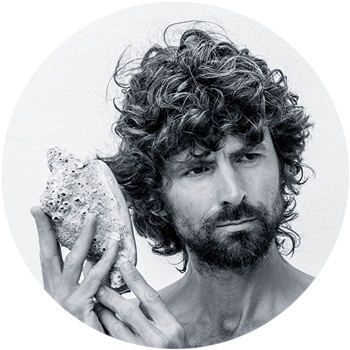
James Boag | Whole Life Yoga
The yoga of the whole human being. Practical philosophy, storytelling, movement, inquiry, looking in ways that reach beyond our habitual ways of looking.
Listen to James’ unique whole life yoga perspectives on the WHOLE LIFE YOGA podcast.

